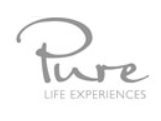Before we get on to photography, please be sure you are safe! The Masai Mara and Serengeti are especially dangerous after dark when the predators are at their most active, so please don’t wander anywhere unaccompanied to take pictures at night…no shot is worth bumping into a grumpy buffalo or disturbing a hungry lion! The guides, camp staff or askari (guards) will be happy to go with you and deal with any unwanted encounters.
OK, now that’s out of the way, photography after dark is a hugely fun thing to do, and not nearly as complicated as a lot of folks like to make out 🙂
For astro photography all you need is a camera that can be switched to fully manual settings, and the widest lens you own. A tripod is great but not absolutely essential – you can just use just a table, your bag or a couple of handy rocks to prop your camera up pointing at the sky (why carry heavy kit if you don’t really have to with those 15kg weight limits on the flights in?!?) If you want to get all fancy you can also set up a remote shutter release to minimise any shake, but again it’s not a deal breaker.
The main considerations are to keep the shot steady, allow as much light as you can into your sensor without over or under-exposing both the foreground and the sky, and to get your timing bang on so it’s all sharp.
Oh…and you’ll need the weather to play ball and give you a clear night!

When you’re deciding how to frame your shot have a look at where the Milky Way is in the sky and try to include it – that’s often the most spectacular part of a night sky image. You’ll also probably want some sort of foreground interest as well – a dramatic tree, the camp or even yourself or a friend. Above is a ‘selfie’ I took outside my tent at Alex Walker’s Serian Nkorombo camp on my last visit – here’s a rough guide how you can try this and a whole load of other imaginative night time shots too. This method can be used for all sorts of star, northern lights and other night time photography, including around the campfire and light painting, as in the shot below.

Settings Summary
Shooting mode: Manual – you’ll need to take full control of your camera, not let it control you!
Aperture: as wide as possible (the lowest F number your lens will allow)
Shutter speed:
This is where the ‘500 rule’ is a handy guide. Just divide 500 by the focal length of your lens to get the time you can shoot for without the stars starting to ‘trail’ due to the earth’s rotation – we want to keep them as sharp pinpoints not blurry smears for this shot. So for my 14mm lens on a full frame sensor the optimum time is 500/14 = 35 seconds. (Please note: If you use a crop sensor camera you will have to remember to multiply the focal length by the crop factor – usually 1.5 or 2 – to get the correct equivalent focal length).
To get a shutter speed of 35 seconds I’d have had to go to Bulb setting. However, because the little bit of ambient light from the camp would have overexposed me, I just set it to 25 seconds.
If you want to make star trails you’ll need to extend your shutter speed and put your ISO and/or aperture down and set an interval timer, then stitch all the shots together in Photoshop or another software plug-in….but that’s a whole other blog…
Additional Lighting
In the selfie shot above there was just a tiny amount of light from a camp lantern, but if there is no ambient light at all you may wish to very quickly flash a torch on your foreground subject to expose it correctly – experiment with this if necessary. In the campfire shot I asked one person to light paint the tree, and another to write the word Serian, with torches.
ISO: experiment a little, depending on how bright the sky is due to the moon, and your subject is due to ambient light etc. I usually start at around 800-1000 and adjust if the shot is too bright or too dark.
Long Exposure Noise Reduction – can be handy, but my personal preference is to remove noise in post production.
Focus mode: Manual – in the dark your autofocus may struggle, so switch to manual and focus – usually to infinity or just the tiniest touch off it – with a wide lens your subject should be in focus too, as long as it’s not too close to the camera.
Your foreground subject (even if human!) should remain still for the duration of the shot – trickier than it sounds this – for the selfie I didn’t have my remote release with me, so had to dash into shot once I’d pressed the shutter release, and freeze for 25 seconds! However some nice arty effects can be produced if the subject does move – it’s worth experimenting.
So that’s a brief starter for night time photography – your only limit is your imagination – good luck, and remember to be extra careful out there after dark!
All content © Trai Anfield
Photographer In Residence, Alex Walker’s Serian Camps, January 2018






















Comments are closed.